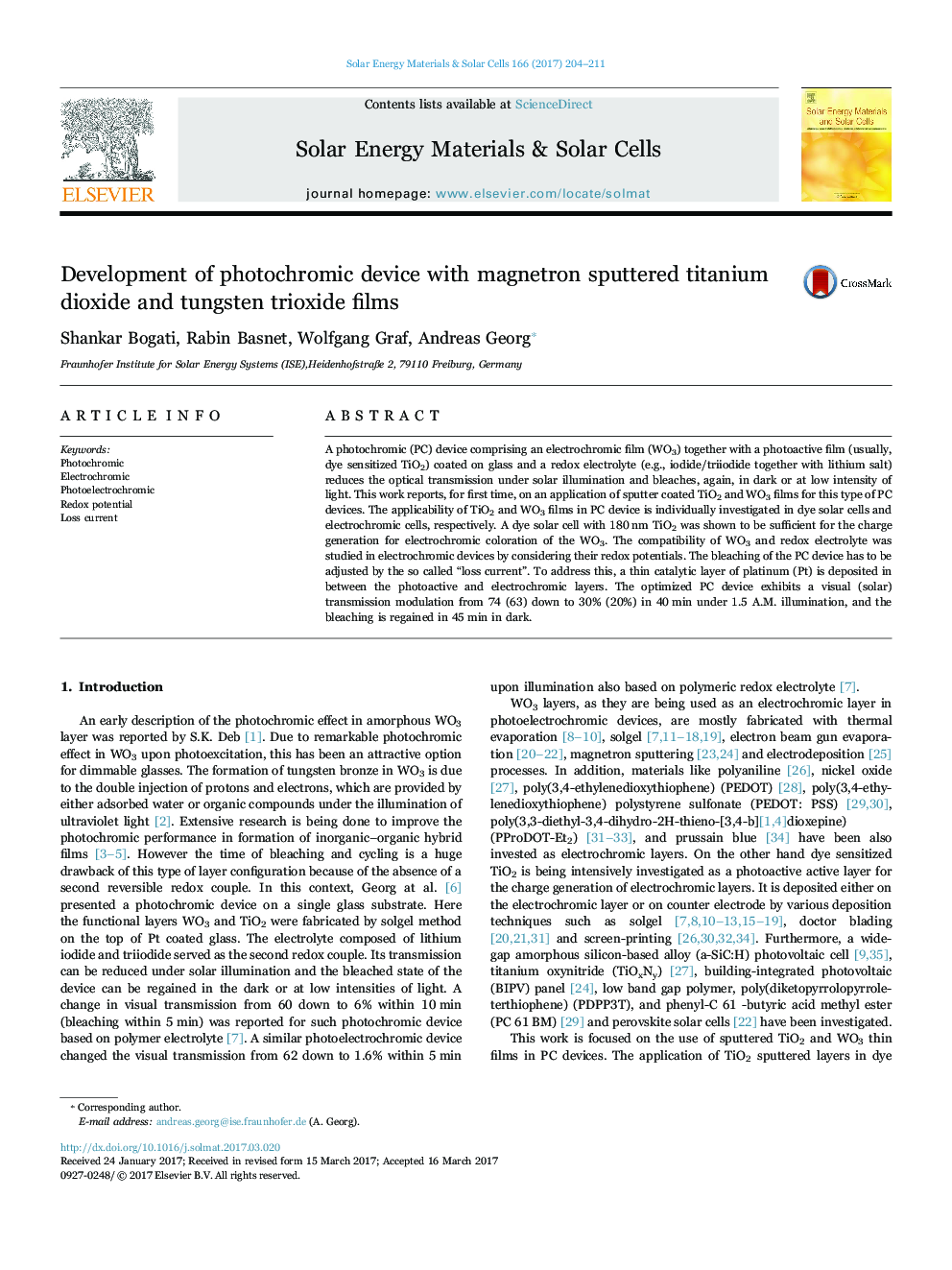| Article ID | Journal | Published Year | Pages | File Type |
|---|---|---|---|---|
| 4758851 | Solar Energy Materials and Solar Cells | 2017 | 8 Pages |
Abstract
A photochromic (PC) device comprising an electrochromic film (WO3) together with a photoactive film (usually, dye sensitized TiO2) coated on glass and a redox electrolyte (e.g., iodide/triiodide together with lithium salt) reduces the optical transmission under solar illumination and bleaches, again, in dark or at low intensity of light. This work reports, for first time, on an application of sputter coated TiO2 and WO3 films for this type of PC devices. The applicability of TiO2 and WO3 films in PC device is individually investigated in dye solar cells and electrochromic cells, respectively. A dye solar cell with 180Â nm TiO2 was shown to be sufficient for the charge generation for electrochromic coloration of the WO3. The compatibility of WO3 and redox electrolyte was studied in electrochromic devices by considering their redox potentials. The bleaching of the PC device has to be adjusted by the so called “loss current”. To address this, a thin catalytic layer of platinum (Pt) is deposited in between the photoactive and electrochromic layers. The optimized PC device exhibits a visual (solar) transmission modulation from 74 (63) down to 30% (20%) in 40Â min under 1.5 A.M. illumination, and the bleaching is regained in 45Â min in dark.
Related Topics
Physical Sciences and Engineering
Chemical Engineering
Catalysis
Authors
Shankar Bogati, Rabin Basnet, Wolfgang Graf, Andreas Georg,
